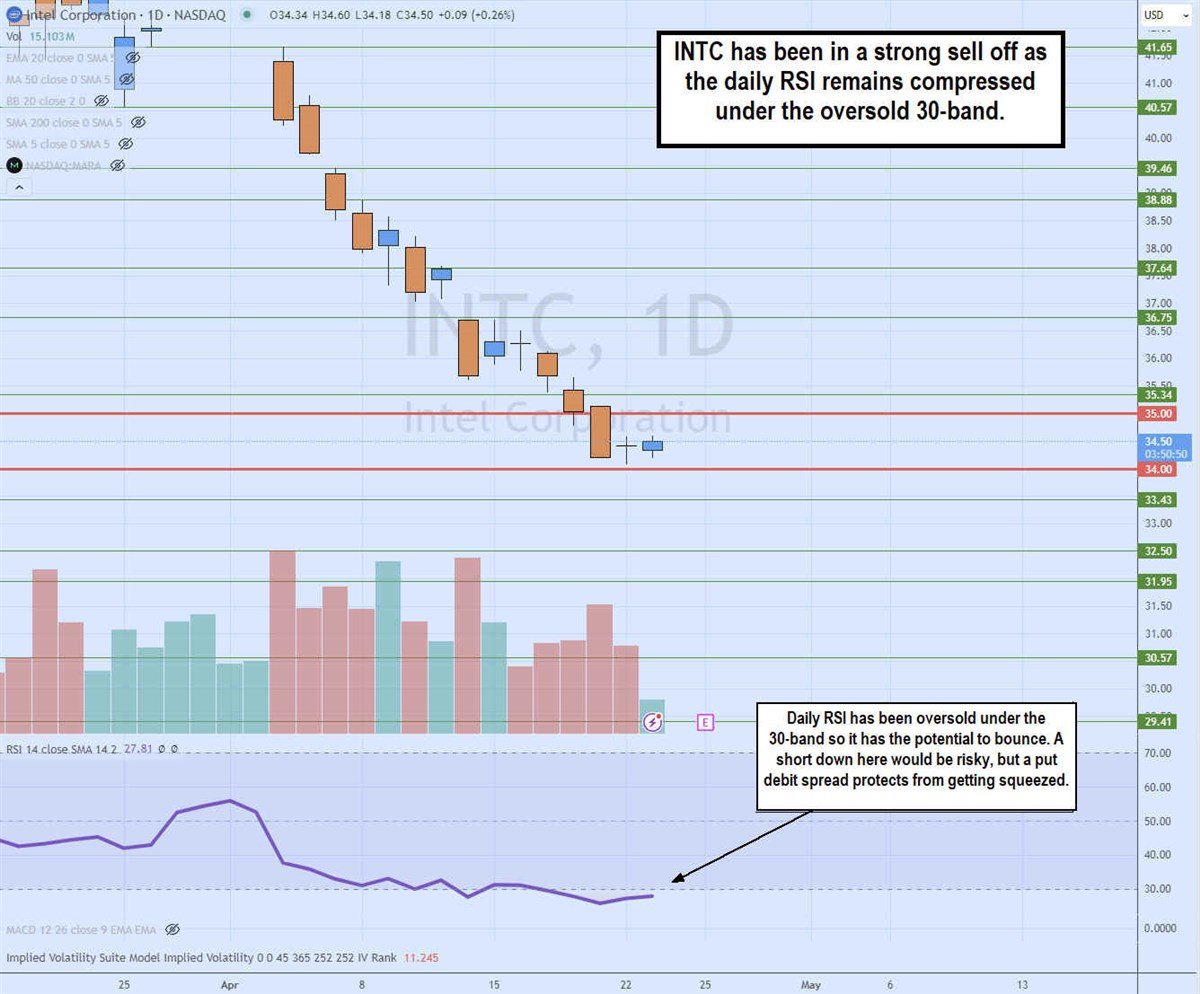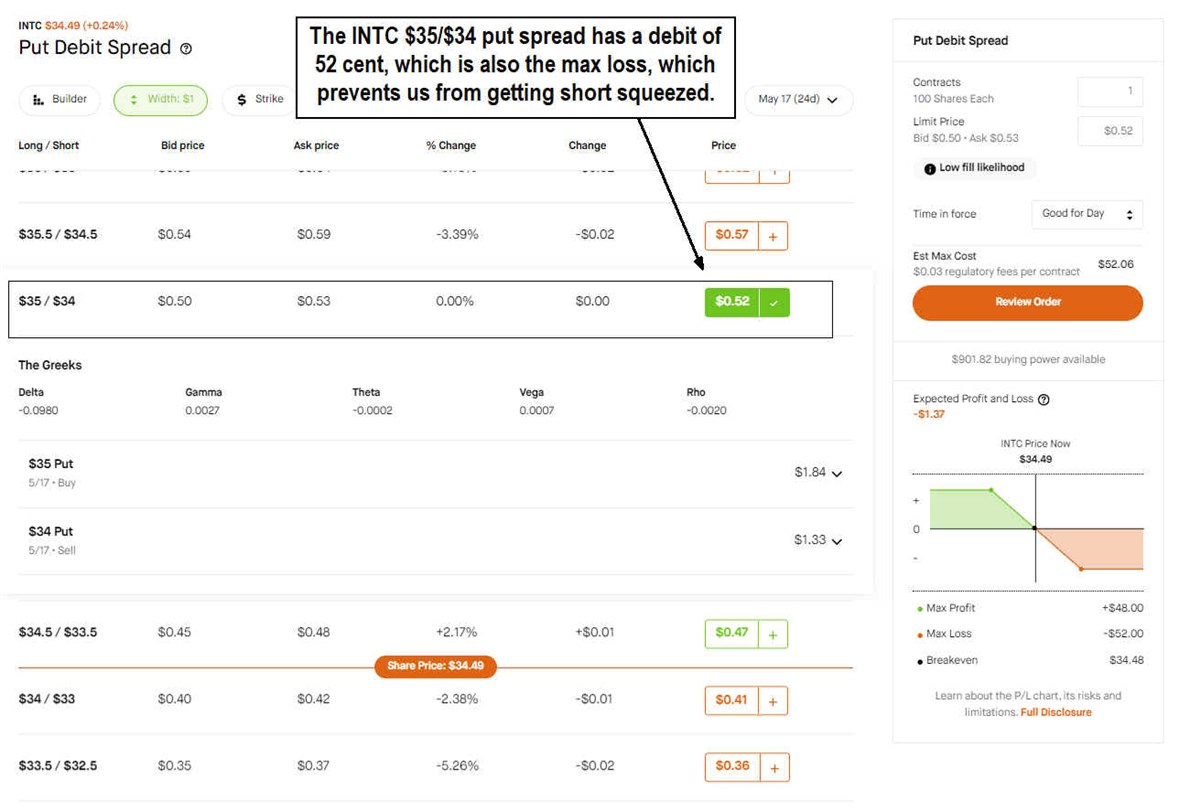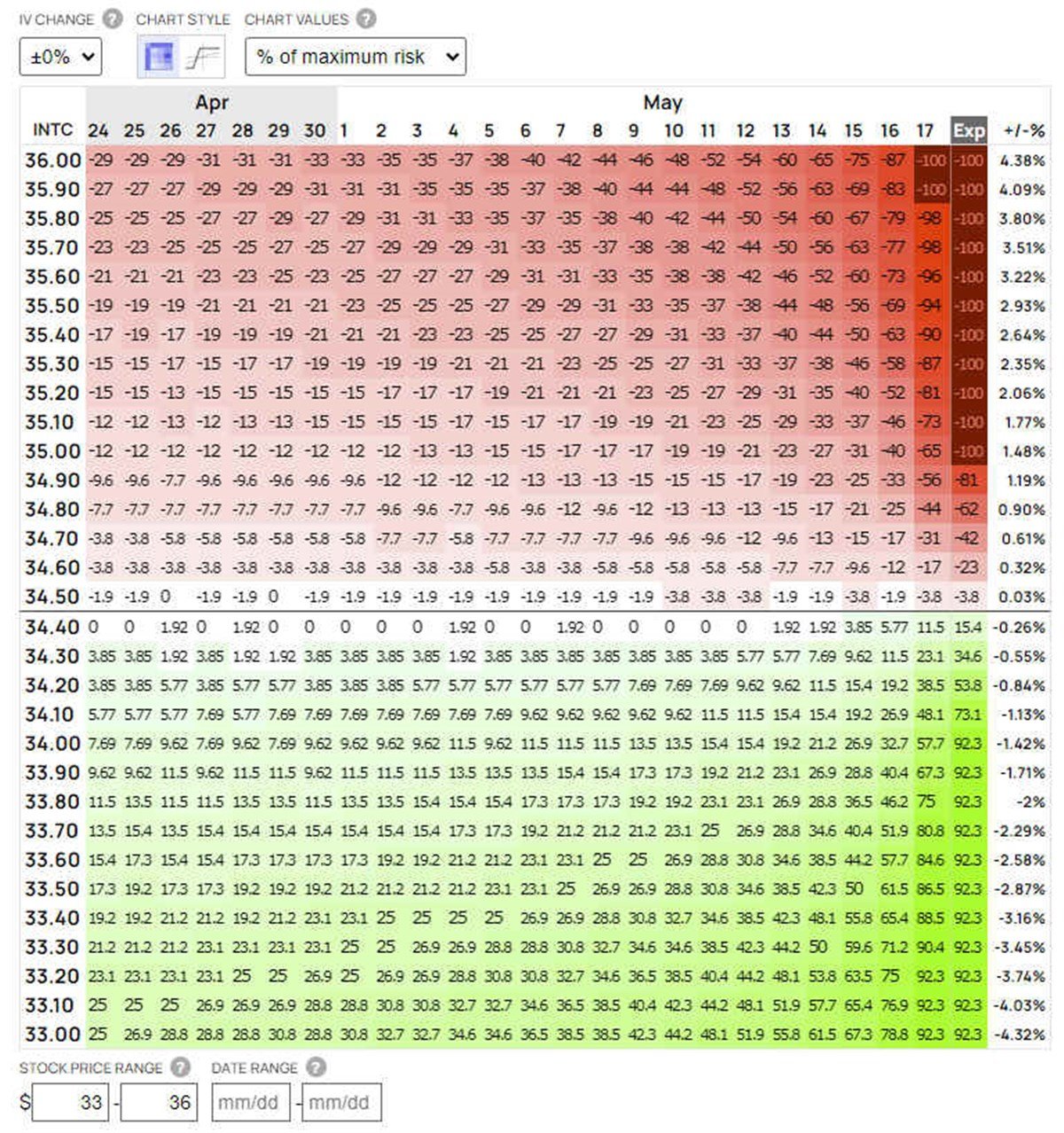
The market sell-off has awakened the hibernating bears. If you're feeling bearish and seek to profit from falling stocks but feel short selling is too risky, you can take a lower-risk approach with stock options.
Short-selling stocks can result in unlimited losses if the stock runs up against you; options can help to define your risk better and even cap the maximum losses.
You may consider taking long put options on stocks you feel will fall, but you bear the risk of losing 100% of your investment if the underlying stock doesn’t fall or fall fast enough. An alternative way to limit your risk is to use a put debit spread strategy. This multi-leg trade can help finance your long put option, enabling you to take a bearish directional trade at a fraction of the cost.
What is a Put Debit Spread?
A put debit spread also called a bear put spread or put spread, is comprised of a long put at a higher strike price and a short put at a lower strike price. Both options have the same expiration date. Debit spreads are trades you pay upfront for out of pocket because the difference between the put you short/sell and the put you buy long is what you have to pay for the trade. The cost or debit of the long put is offset by the credit received for shorting/selling the lower-priced put. The remaining debt is the cost of the trade.
A put debit spread is a multi-leg options trade where you would buy 1 higher strike price put option and short/sell 1 lower strike price put option.
For example, an ABC $55/$50 put debit spread is executed in 2 trades: buy 1 ABC $55 put option and sell/short 1 ABC $50 put option.
Example of a Put Debit Spread with INTC
Let's use an example of computer and technology sector giant Intel Co. (NASDAQ: INTC).

INTC has a very bearish daily chart as it has been selling off firmly from $41.65 to $34.50. The daily RSI has been suppressed under the oversold 30-band. Short-selling the stock when it is this oversold could result in getting short-squeezed. However, if we expect the selling to continue but want to limit our risk, we can use a put debit spread strategy. This will limit our losses preventing us from getting hurt too much if a short squeeze materializes, but also provides profit potential if the selling continues.
Executing the Trade
INTC is trading at $34.49. We choose the May 17, 2024, expiration date which is 24 days away. We can choose the INTC $35/$34 put debit spread for 52 cents. Most brokerage platforms will let you select the put debit spread trade in one transaction, but you can also do it manually in 2 separate trades.

The 52-cent price is the difference between the $35 put option purchased at $1.84 and the $34 put option sold for $1.33 (minus fees). If INTC spikes, we don’t have to worry about margin calls triggered by a short squeeze because our risk is capped at a maximum loss of 52 cents, no matter how high the stock bounces against us.
The Potential Outcome
Upon expiration, there are 3 potential outcomes.

The breakeven price on the trade is $34.48. This is derived from the $1.00 spread between the strike prices minus the debt (cost) of the trade 52 cents.
The maximum loss is $52 if INTC closes at or above $35.00 on expiration. This is the amount of the debt that we paid to put on the trade. $35.00 is the strike price of the put we bought long.
The maximum gain is $48 if INTC closes at or below $34.00 on expiration. This is the lower strike price where the put was sold/short.
You can close out the trade before options expiration as well. However, if you want to achieve the maximum profit, then you'll want to hold through expiration to get the maximum theta premium.
The pros are:
- Maximum loss is capped. You go into the trade fully aware that you can lose what you paid for the trade and nothing more.
- Enables you to short an oversold stock without the risk of a margin call. This strategy helps you avoid getting short-squeezed and getting caught with a margin call if the stock surges against you. You can only lose what you put into the pot.
- Much cheaper than shorting a stock or buying a put option. Using a put debit spread uses less capital than actually short-selling the underlying stock or just buying put options. Making it a debit spread helps to discount the cost of a synthetic short position.
The cons are:
- Maximum profit is capped. While you know what your maximum loss is ahead of time, you are also limited on your maximum gain regardless of how much lower the stock falls under your short put strike price.
- The maximum loss is still 100% of the investment. On a percentage basis, the maximum loss is still a 100% loss on investment. It's just that the investment is only a fraction of what the loss would be money-wise if you short-sell the stock or just buy a put option.
Free to be a Bear Without Getting Short Squeezed
Bears have had it rough after the pandemic opening. However, if you believe the market or a stock price will fall, then consider taking a smaller measured risk with a put debit spread strategy first. While you can hold the position into earnings expiration, you can also roll forward the trade to buy more time or add to your gains.